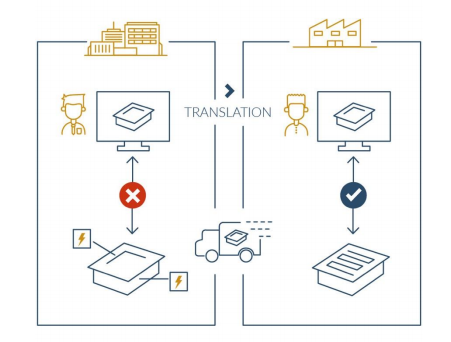Check out this 7-page technology brief by Lifecycle Insights
"...it is crucial to compare and validate the MBD when it moves from
company to company, and from application to application."
- Chad Jackson, Lifecycle Insights
Does your manufacturing team always have the right product definition? You know how critical that is, but even if the design team has their PLM process in order, problems can enter the process downstream.
Leading companies are dramatically streamlining their manufacturing communication processes using Model-Based Definition (MBD) in place of traditional drawings. During this industry transition, automated tools are emerging to reduce risks when exchanging design data. Are you looking to educate yourself on these important trends?
- Investments in Improving Design Documentation
- The Broad Application of an MBD
- Leveraging 3D Comparison and Validation Tools
- Today's Multi-CAD Reality
Exerpt From the Whitepaper
"In today’s digitized world, organizations must overcome a handful of challenges to collaborate effectively across multiple CAD systems and formats across the entire value chain. This multi-CAD issue is not confined to the realm of the engineering department. Different companies as well as internal departments rely on various mechanical CAD and other applications that use an MBD.
In reality, multi-CAD interoperability is a complex undertaking, with the potential for inter-model differences. Various CAD, 3D viewing, and other applications calculate the fidelity of 3D models to different levels of precision. Furthermore, different applications do not define advanced surfaces in the same way, leaving no equivalent definition of a surface when moving an MBD from one application to another. The transfer may result in tiny, but important, differences between the resulting models.
When these problems are left unchecked, suppliers and customers often use diverging definitions for the manufacturing workflow and environment. This has a follow-on effect for the supplier, who may deliver parts that fail to meet the customer’s specifications. Massive disruptions can result, including costly delays, unnecessary waste and scrap, and many other detrimental issues that adversely affect the project."
About Lifecycle Insights
On the Lifecycle Insights website, the company describes their mission: "...to help executives realize value from tech-led initiatives without disruption. We digitally publish research and thought leadership guidance, enabling better investment and deployment decisions."


